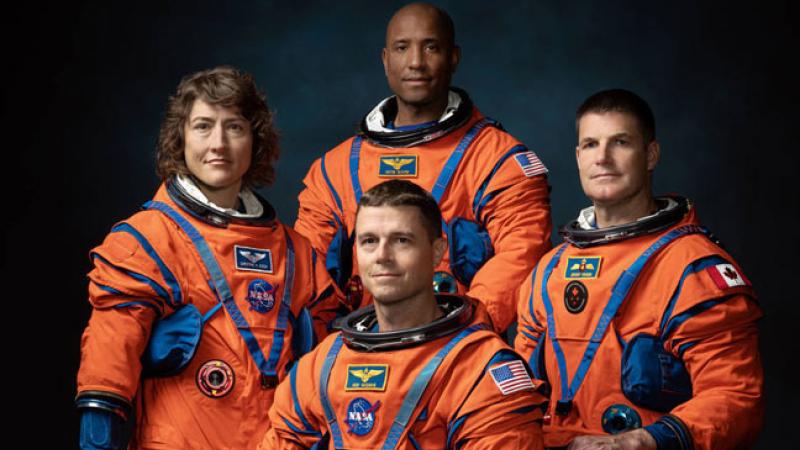First manned lunar mission in five decades will pave the way for moon landing in 2025
April 3, 2023

G. Reid Wiseman, a 1997 graduate of Rensselaer Polytechnic Institute (RPI), is one of four astronauts selected to helm the first crewed moon mission in five decades. The historic Artemis II lunar flyby is set to take off in November 2024.
Wiseman is a 47-year-old decorated naval aviator and test pilot who was first selected to be a NASA astronaut in 2009. He’s completed one prior spaceflight, a trip to the International Space Station (ISS) that had launched aboard a Russian Soyuz rocket in 2014. Most recently, Wiseman served as chief of the astronaut office before stepping down in November 2022, making him eligible for a flight assignment
“RPI alumnus Reid Wiseman ’97 spent 165 days on the International Space Station in 2014, conducting over 300 scientific experiments with his crewmates,” said RPI President Martin Schmidt ’81. “During his time in space, he also delighted the RPI community with a live video call in which he answered questions and did backflips! We at RPI are enormously proud that Wiseman will now serve as the Artemis II mission commander, with the potential to travel further than any human in history.”
The Artemis II mission will build on Artemis I, an uncrewed test mission that sent NASA’s Orion capsule on a 1.4 million-mile voyage to lap the moon that concluded in December. The space agency deemed that mission a success and is still working to review all the data collected.
Artemis II is planned to take off around November 2024. The Orion spacecraft carrying the four astronauts will launch atop a NASA-developed Space Launch System rocket from NASA’s Kennedy Space Center in Florida.
The trip is expected to last about 10 days and will send the crew beyond the moon, though the exact distance is yet to be determined, according to NASA.
Wiseman garnered over 500,000 Twitter followers during his stay on the ISS, when he shared stunning images and stories. “My very first thoughts after getting into orbit and having a look at our planet below were — no photo does this justice, and every single person should get to come see this for themselves,” he said.
He made a “live” appearance at RPI’s Reunion & Homecoming in 2014, when he appeared onscreen live from the International Space Station.
RPI has a long and deep connection with the U.S. space program. Several Rensselaer alumni have gone on to become astronauts and travel in space. John L. Swigert Jr. ’65 (a member of the RPI Alumni Hall of Fame) was named an Apollo astronaut just months after his graduation from Rensselaer, and Richard A. Mastracchio ’87 logged more than 24 days in space as part of the STS-106 Atlantis and STS-118 Endeavour crews.
Former Rensselaer President and alumnus George M. Low ’48 was manager of the Apollo Spacecraft Program Office and oversaw the redesign and testing of the Apollo Command and Service Module, and the Lunar Module. Under his direction, NASA flew eight Apollo missions with great success, including Apollo 8, the first manned lunar orbital flight in December 1968, and Apollo 11, the first manned lunar landing in July 1969. Low’s son, G. David Low ’95, became an astronaut in June 1985 and logged more than 714 hours in space as a crew member of the STS-32 Columbia crew in 1990, the STS-43 Atlantis crew in 1991, and the STS-57 Endeavour crew in 1993.